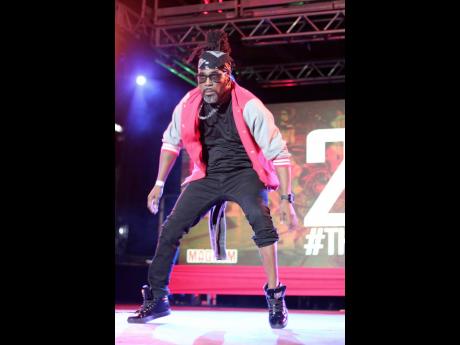When street meets studio … meets When treet tudio... S - Male dancers struggle to affirm masculinity
Being a male dancer comes with its perks, says Orrette Beckford of Dance Theatre Xaymaca. After all, since fewer males than females are known to study dance, the comparatively stronger sex is often in demand when it comes to castings. Beckford is one of two males with the company and one of six male dancers who performed in its recent 24th Season of Dance.
“Being a part of the company has proven to be a positive force in my life and career as a dancer; more so, it has had an even greater influence on my confidence. As one of few males to interact with the female-dominant company, it does a lot for my masculinity,” Beckford tells The Gleaner.
And masculinity, he says, is a major attribute that defines a man, his worth and the respect he receives in the arts and entertainment industry.
He shares: “I have become more of a man – meaning, as a male dancer, one has to be physically powerful – he also has to be emotionally and mentally strong. These are lessons that our ‘mother’ Barbara McDaniel (artistic director) imparts on every male dancer that comes into her presence.”
The stereotypes did not derail his plans to hop on Dance Theatre Xaymaca’s train. Beckford, who originally danced with The Company Dance Theatre under the tutelage of artistic director Tony Wilson, notes that Dance Theatre Xaymaca was an all-female company before he joined nine years ago. It was a challenge then, he explains. “A decade ago, the male dancers dominated the streets and if one dared to cross over in contemporary dance, it was considered effeminate or stigmatised as an activity for the homosexual male because of the clothing, and plus, the dance moves of the street were measured as manlier.”
Stigma still exists
It was necessary for dancer-choreographer Orville Hall to negotiate with Dr Monika Lawrence when he got involved with the Stella Maris Dance Ensemble in 2002. Hall states:
“As a young man growing up in dance, hailing from the inner city, we labelled men that wore tights like the women, even if it was for dance, as gay. We figure a man must dress differently when it comes to dance. So I spoke to our artistic director, Dr Lawrence, and explained that based on where I am from I could not wear tights, I was fully prepared to learn about dance, in all its “wholistic” form but refused to wear it. Jazz pants was the closest to anything close-fitting I agreed to wear.”
The stigma may not be as strong as it was years ago, “but the issue is that it still exists, that as it relates to the views of young men in dance hall, ballet and modern contemporary dances are practised by gay men”.
The Dance Xpressionz director says that contemporary male dancers don’t have to build any specific reputation or ‘street credit’ to have those in the field show respect; it is, however the opposite in the streets of dance hall.
“It’s ironic. Young male dancers, who refuse to wear tights in the formal dance education space, are wearing tights. At one point, it was just skinny jeans but now they wear the kind of tights that track and field runners would wear, as fashion, so I think we have seen a complete evolution as it relates to attire,” he said. “Theatre dancers do not go into the street often; it is not a necessity. What is important is that their technique and work ethic are up to par.”
He notes that as a judge of Dancin’ Dynamites, he has seen young men win, accept scholarships to get formal training and take on the challenge and are now touring.
“We are slowly changing the scope, but as dance practitioners, the bigger industry people need to host more seminars on dance that includes the dancehall so that the youths can understand that to be a student of their craft, it can only help to be formally trained and add value to the natural talent.”

